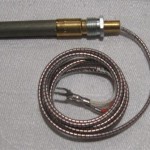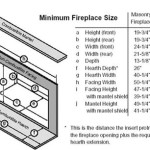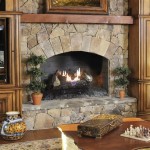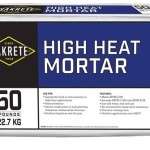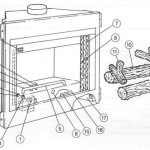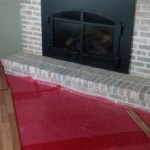Fireplace Faux Brick: An Affordable and Stylish Renovation Choice
Faux brick, also known as simulated brick or brick veneer, has gained significant popularity in interior design, particularly for fireplace surrounds. This material provides the aesthetic appeal of real brick without the weight, cost, and installation complexities associated with traditional masonry. The use of faux brick in fireplace design offers a versatile and practical solution for homeowners seeking to enhance the visual appeal and ambiance of their living spaces.
The appeal of faux brick lies in its ability to replicate the texture, color variations, and overall character of authentic brick. Modern manufacturing processes have resulted in faux brick products that are virtually indistinguishable from the real thing, at least upon casual observation. This advancement allows homeowners to achieve the desired rustic or industrial aesthetic without the structural demands and expense of bricklaying.
Furthermore, faux brick offers advantages in terms of installation. Unlike traditional brick, which requires skilled masons and significant structural support, faux brick can be applied to existing surfaces using adhesives and basic tools. This ease of installation makes it a viable DIY project for many homeowners, further reducing the overall cost of a fireplace renovation.
Cost-Effectiveness and Budget Considerations
One of the primary drivers behind the popularity of faux brick for fireplaces is its cost-effectiveness. Real brick installations necessitate significant labor expenses, material costs, and often require reinforcing the existing fireplace structure to bear the added weight. Faux brick, on the other hand, significantly reduces these expenses.
The material costs for faux brick are typically lower than those for genuine brick. This difference is due to the manufacturing process, which involves creating molds and using materials like concrete, polyurethane, or clay-based composites. These materials are less expensive to source and process compared to natural clay bricks. Moreover, faux brick often comes in panels or individual pieces that are easier to handle and transport, reducing shipping costs.
Installation costs are also substantially lower. The lightweight nature of faux brick means that it can be applied to a variety of surfaces without the need for extensive structural modifications. A qualified contractor specializing in tile or stone installation can typically complete a faux brick fireplace surround in a fraction of the time required for a traditional brick installation. For homeowners comfortable with DIY projects, the installation can be undertaken with careful planning and a basic skillset, eliminating labor costs altogether.
The long-term cost benefits extend beyond the initial installation. Faux brick is typically more resistant to moisture and cracking than real brick, reducing the need for frequent repairs or maintenance. This durability contributes to the overall cost-effectiveness of faux brick as a fireplace surround material.
Design Versatility and Aesthetic Options
Faux brick offers a wide range of design possibilities, catering to diverse aesthetic preferences. Manufacturers produce faux brick in various colors, textures, and patterns, allowing homeowners to create a fireplace that complements their existing décor. Whether the desired look is rustic, modern, industrial, or traditional, faux brick can be tailored to achieve the desired effect.
Color options range from classic reds and browns to contemporary grays and whites. The color of the faux brick can significantly impact the overall ambiance of the room. Lighter colors can brighten a space and create a more open feel, while darker colors can add warmth and depth. The color chosen should harmonize with the existing wall colors, furniture, and flooring to create a cohesive design.
Texture variations further enhance the design flexibility of faux brick. Some faux brick products replicate the rough, uneven surface of reclaimed brick, while others have a smoother, more refined finish. The texture can add visual interest and depth to the fireplace surround. For example, a heavily textured faux brick can create a rustic, farmhouse feel, while a smooth, uniform faux brick can complement a modern, minimalist aesthetic.
Patterns can also be customized to create unique designs. Faux brick panels can be arranged in various patterns, such as herringbone, stacked bond, or running bond. The pattern chosen can affect the visual impact of the fireplace surround. For instance, a herringbone pattern can add a touch of sophistication, while a stacked bond pattern can create a clean, contemporary look. Individual faux brick pieces can offer more flexibility in creating custom patterns and designs.
Beyond color, texture, and pattern, faux brick can be further customized with paint, stain, or grout. Painting faux brick can create a unique color or add a protective coating. Staining can enhance the natural variations in the faux brick and add a more weathered look. Grout can be used to fill the gaps between the faux brick pieces, adding definition and completing the overall design.
Installation Process and Practical Considerations
The installation of faux brick on a fireplace is a relatively straightforward process, but it requires careful planning and attention to detail. The preparation of the surface, the selection of appropriate adhesives, and the proper cutting and fitting of the faux brick are all crucial steps in ensuring a successful installation.
The first step is to prepare the surface of the fireplace surround. This involves cleaning the surface thoroughly to remove any dust, dirt, or grease. Any loose or flaking paint should be scraped off, and any imperfections in the surface should be filled with a patching compound. The surface should be smooth, clean, and dry before applying the adhesive.
The selection of an appropriate adhesive is critical. A high-quality construction adhesive specifically designed for bonding to masonry or stone is recommended. The adhesive should be compatible with the type of faux brick being used and should be able to withstand the heat generated by the fireplace. It is important to follow the manufacturer's instructions for applying the adhesive.
The faux brick can be cut to size using a variety of tools, including a wet saw, a circular saw with a masonry blade, or a utility knife. A wet saw provides the cleanest cuts and is ideal for cutting larger pieces of faux brick. A circular saw with a masonry blade can be used for smaller cuts and for creating angled edges. A utility knife can be used to score and snap thinner faux brick panels.
When installing the faux brick, it is important to start at the bottom and work upwards. Apply the adhesive to the back of the faux brick and press it firmly against the prepared surface. Use spacers to maintain consistent grout lines between the faux brick pieces. As the faux brick is installed, periodically check for level and plumb to ensure that the finished surface is straight and even.
Once the faux brick has been installed, allow the adhesive to cure completely according to the manufacturer's instructions. This may take several days, depending on the type of adhesive used. After the adhesive has cured, grout can be applied to fill the gaps between the faux brick pieces. The grout should be carefully applied and wiped clean to create a smooth, professional finish.
For fireplaces that use gas or electric inserts, it is essential to ensure that the faux brick is rated for use around heat. Check the manufacturer's specifications for the faux brick to determine its maximum operating temperature. Additionally, ensure that the faux brick does not obstruct any ventilation openings or access panels on the fireplace insert.
Proper maintenance of a faux brick fireplace surround involves regular cleaning to remove dust and soot. Use a soft brush or a vacuum cleaner with a brush attachment to remove loose debris. For more stubborn stains, use a mild detergent and a damp cloth. Avoid using harsh chemicals or abrasive cleaners, as these can damage the surface of the faux brick.

If You Re Going To Make It Better Fake Diy Brick Fireplace

If You Re Going To Make It Better Fake Diy Brick Fireplace

How To Diy Faux Brick Fireplace Shiplap The Simple Cozy Haven

Diy Faux Fireplace Updated Bless Er House

If You Re Going To Make It Better Fake Diy Brick Fireplace

White Brick Fireplace Diy Build With Faux Barron Designs

Our Diy Faux Brick Fireplace Re Decor More

Diy Faux Fireplace Updated Bless Er House

Building An Electric Fireplace With Brick Facade

Diy Faux Fireplace Mantel With Tile And Brick
Related Posts

